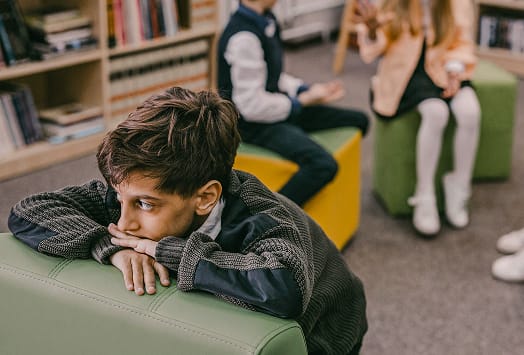The phrase “back to school supplies” raises a lot of questions for parents. Most of us don’t know how much time our children will be spending in an actual classroom, and we’re coming to terms with our home (at least, for part of the week) becoming a place of learning. What was once a mindless trip to Staples to grab enough unnecessary binders and colorful folders to stock a school has turned into a game of figuring out how to convert our four-person kitchen room table into a classroom. Hint: it’s not easy.
So...what are the “supplies” needed for this transformation? After talking to many Sawyer parents in similar situations, we realized the tools children need aren’t necessarily bought in a store. To the best of our ability, we put together the tips to ensure your little ones are comfortable learning from home. This is a growing list, so if you have tips or ideas, DM us at @hellosawyer — we’d love to hear from you.
Imagination and rearranging
When we think of supplies, we think of tools that will set our children up for success. However, these tools don’t always come in the form of physical goods. Sometimes it just takes a little bit of imagination….and some rearranging...to make your space feel like a classroom.
Set up a desk
Don’t worry, this doesn’t need to be your child’s personal office. If you’re anything like us, your kitchen table is going to be the spot — that’s really all the space we can muster up. As much as we’d love to give our little scholars a dreamy Pinterest-worthy office set-up, for many of us, it’s not happening this year.
Minimize Distractions
The workspace is half the battle. The bigger challenge is getting your children to actually work. From kitchen noise and sibling banter to TV sound and vacuuming, there’s no shortage of distractions at home. That’s natural. The key is to minimize them. We recommend a few things:
- Remember taking tests as a kid with folders around you? It’s time to build those again. Folder forts are a great way to make cubicles so your children can focus on what’s in front of them, and not all the action around them.
- When your children are taking a class, try to bring all surrounding noise down. Sometimes music or white noise can help them focus — so that’s fair game.
- Be selective with the supplies in their space. The more gadgets and contraptions, the more distractions. Markers/colored pencils, pencils, rulers and scissors should suffice!
Comfort is key
“Comfort” may not be considered a school supply to you, but it’s one of the most important pieces of a productive day (so… obviously we need to include it in this roundup). With a home setup, here are some steps you can take to emulate a classroom environment:
- A comfortable chair for your child will go a long way. One with a straight back and sized to their height is ideal.
- Snacks, snacks, snacks. Make sure there are snacks nearby. No snacks = more meltdowns.
- If you decide to invest in some office supplies, we recommend an oversize keyboard and a child-sized mouse — this is primarily to account for younger children’s motor skills/abilities.
- We have done a lot of research about how to keep your child comfortable with virtual learning — you can check out all of those tips here.
Your children will be spending a lot of time in their work space, so it’s important it feels like their home! Before the year starts, consider building the space with your children — personalize it with stickers, art, and other accessories.

Take breaks!
Even though we’re talking about supplies, we think it’s important to squeeze this tip in. Typically, every 30 or 45 minutes of learning should be followed by a 10 or 15 minute break. This can be time used to play a game, or read a book.
Many classrooms have a cozy space for kids to curl up and read and cuddle with stuffed animals. These “safe” spaces are a great way to balance the learning they’ll do at the table, and will help your children break up the day. We put together a variety of offline games your little ones can play so they can unwind between class. If you’re searching for book options, we put together a list of great options by age group here.
Develop a routine
At the end of the day, developing a routine is key. Children function best with a certain degree of structure, so maintaining as much of their preexisting routine will be beneficial. Some things we’ll be doing are:
- Using a dry erase board to list weekly assignments and schedules. Take it a step further by having your child help with the planning! Giving your kids the opportunity to take ownership of their schedule will help them feel more invested in the routine.
- Break up the day with consistent lunch times. Ensuring each day follows a similar schedule is key to productivity! Consider making lunch the night before (like a normal school day!) so you and your little ones can hit the ground running in the morning!
- Setting timers that will give our children a visual of how much time is left in class.
"They need a routine and having a consistent curriculum for them is crucial. One that they’re familiar with everyday is even better because, again, that builds their confidence." Lady B, Music Educator
Children often associate home with feelings of relaxation, fun, and family time. And why wouldn’t it be? Their behaviors are different at home because it’s a familiar and comfortable space — opposed to the more structured classroom environment. Understanding and embracing this is the first step to turning your home into a place for learning. It’s not an easy task, but if you adopt these tips and supplies, both you and your children will go into the fall like champions!
















